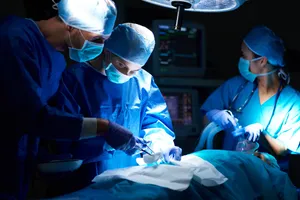Do you want to know more about laparoscopic surgery? Curious about how it’s done and the benefits it provides? Well, you’re in luck!
In this article, we will explore the world of laparoscopic surgery, explaining its advanced techniques and the advantages it offers. You will gain a better understanding of this minimally invasive procedure and why it is preferred by many medical professionals.
Get ready to discover the fascinating world of laparoscopic surgery!
What Is Laparoscopic Surgery?
If you’ve ever wondered what laparoscopic surgery is, let me explain it to you.
Laparoscopic surgery, also called minimally invasive surgery, uses small cuts and special tools to do procedures inside the belly. This method causes less pain, takes less time to recover, and leaves smaller scars compared to the usual open surgery.
Laparoscopic techniques involve using a thin tube called a laparoscope, which has a light and camera, to see the organs and guide the surgical tools.
How Laparoscopic Surgery Done?
To understand how laparoscopic surgery is done, it’s important to know the specific steps involved.
Laparoscopic surgery involves making small incisions and using specialized instruments.
The surgeon starts by making tiny cuts and inserting a laparoscope, which is a thin tube with a camera, into one of the incisions. This allows them to see inside the body.
Additional incisions are made to insert surgical instruments.
However, it’s important to note that laparoscopic surgery can have complications such as bleeding or infection, despite its benefits.
Benefits of Laparoscopic Surgery
The advantages of laparoscopic surgery are a quicker recovery time and less scarring. This less invasive procedure offers several benefits compared to traditional open surgery. Some of the main advantages of laparoscopic surgery are:
- Less postoperative pain
- Faster return to normal activities
- Shorter hospital stay
- Lower risk of infection
What surgeries are performed laparoscopically?
Nowadays, lots of surgeries can be done using laparoscopy. Whether you can have this type of surgery depends on how complicated your condition is. If it's really complicated, you might need traditional open surgery. But for many common surgeries, laparoscopic surgery is becoming the go-to choice. It's cheaper and often leads to better results for patients.
Some of the surgeries that can be performed laparoscopically include cyst, fibroid, and stone removal, biopsies, hernia repairs, gallbladder removal, and even complex procedures like pancreatic cancer surgeries. However, the choice depends on the complexity of the condition, as some cases may still require open surgery.
Advanced Kinds of Laparoscopic Surgery
There are different types of laparoscopic surgery that use advanced techniques and have better results.
One of these techniques is called robotics-assisted laparoscopy. In this technique, the surgeon controls robotic arms to make precise movements during the surgery.
Robotics-assisted laparoscopy improves surgical outcomes by providing better precision, dexterity, and visualization. It also allows for smaller incisions, less blood loss, shorter hospital stays, and faster recovery times.
This advanced form of laparoscopic surgery is changing the field and giving patients better surgical options.
Frequently Asked Questions
What conditions can be treated with laparoscopic surgery?
Laparoscopic surgery can be used to treat a wide range of conditions, including gallbladder disease, appendicitis, hernias, reflux disease, colorectal conditions, gynecological issues, and certain types of cancer. It's also commonly used for diagnostic purposes.
Is laparoscopic surgery safe?
Yes, laparoscopic surgery is considered safe and has been used successfully for decades. It generally involves smaller incisions, reduced pain, and faster recovery compared to open surgery.
Are there any risks associated with laparoscopic surgery?
While laparoscopic surgery is safe, like any medical procedure, it carries some risks. Potential complications may include infection, bleeding, injury to surrounding structures, or adverse reactions to anesthesia. However, these risks are relatively low.
What is the recovery process like after laparoscopic surgery?
Recovery from laparoscopic surgery is typically quicker than with open surgery. Patients may experience mild discomfort and are usually able to resume normal activities within a few days to a couple of weeks, depending on the procedure.
How does laparoscopic surgery compare to traditional open surgery?
Laparoscopic surgery offers several advantages over traditional open surgery, such as smaller incisions, less pain, reduced scarring, shorter hospital stays, and faster recovery times.
Can laparoscopic surgery be used for weight loss procedures?
Yes, laparoscopic surgery is commonly used for weight loss procedures, such as gastric bypass and sleeve gastrectomy. It provides a minimally invasive approach to help individuals achieve significant weight loss.
What are the costs associated with laparoscopic surgery?
The costs of laparoscopic surgery can vary widely depending on the type of procedure, location, and insurance coverage. It's essential to discuss costs with your healthcare provider and insurance company to get a clear understanding of your financial responsibilities.
Are there any limitations to laparoscopic surgery?
While laparoscopic surgery is suitable for many conditions, it may not be appropriate for extremely complex or advanced cases. Your surgeon will determine if laparoscopic surgery is the best option based on your specific medical condition and needs.
Wrapping Up: Laparoscopic Surgery!!
Laparoscopic surgery is a modern and less invasive procedure that has many benefits compared to traditional open surgery. Surgeons use small incisions and a camera-guided instrument to perform complex procedures with precision and minimal scarring.
This advanced technique has changed the field of surgery, leading to quicker recovery times, less pain and discomfort, and better patient outcomes.
Laparoscopic surgery is continuously improving, with new advancements and procedures being developed to expand its use in different medical specialties.
